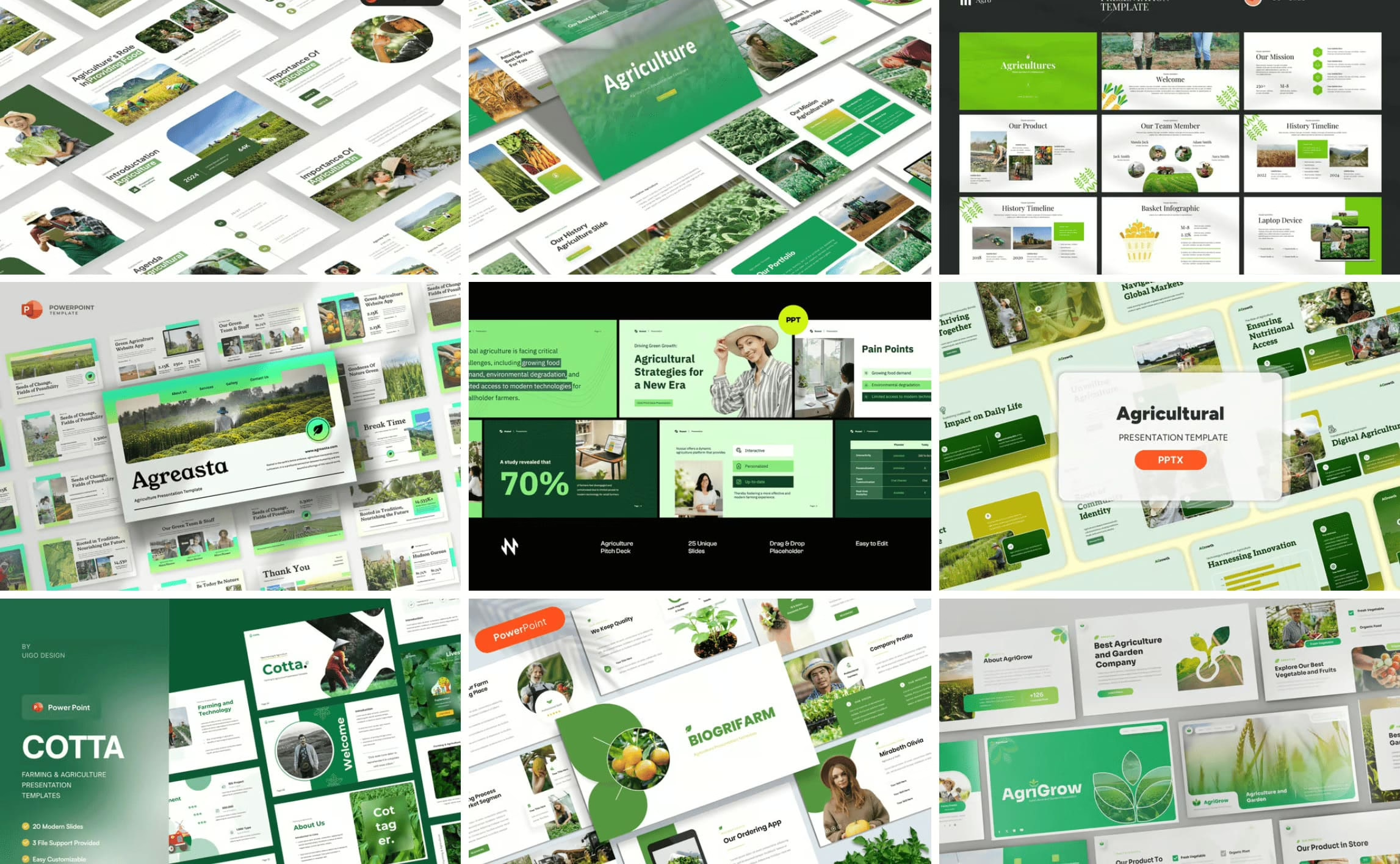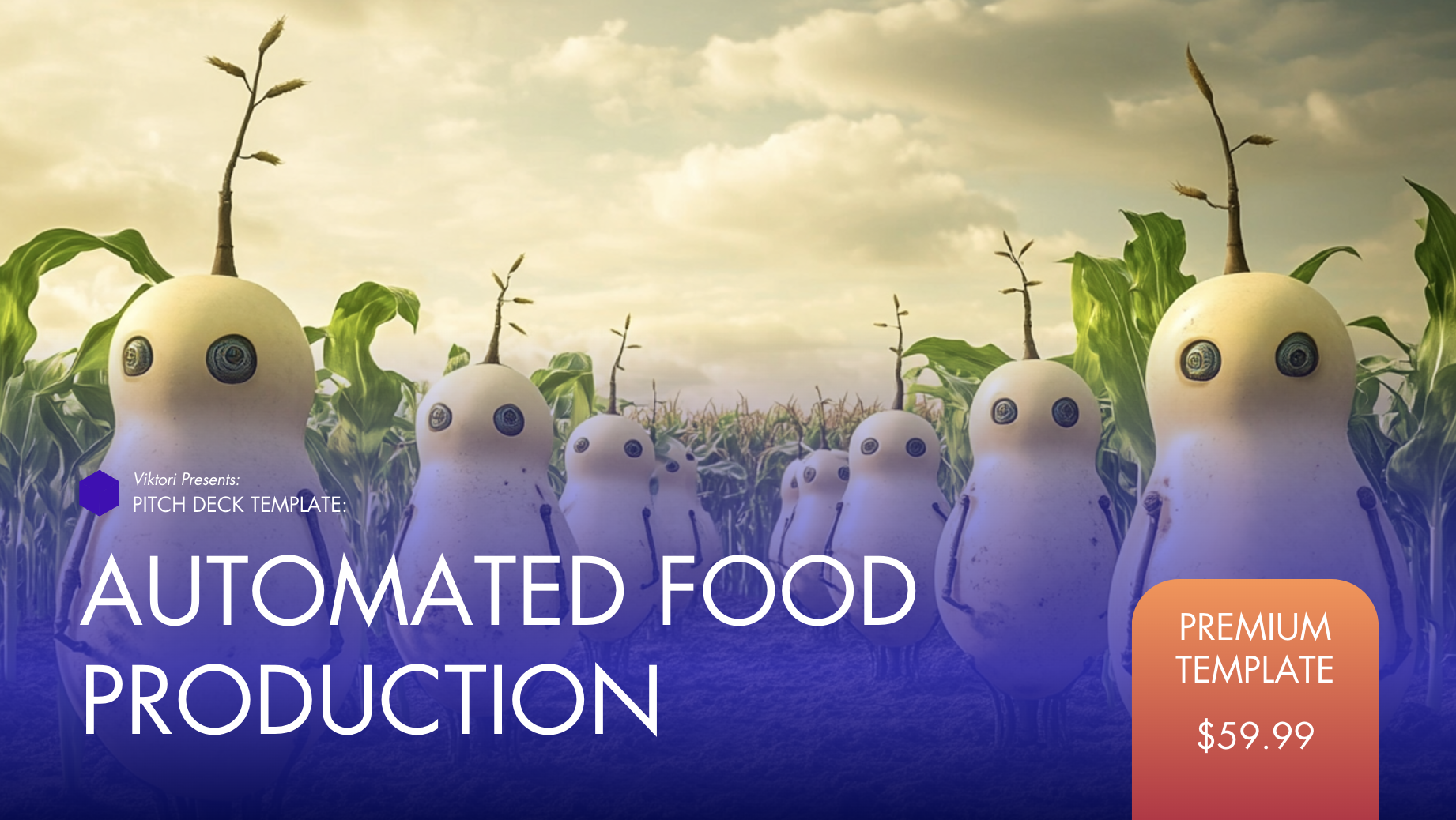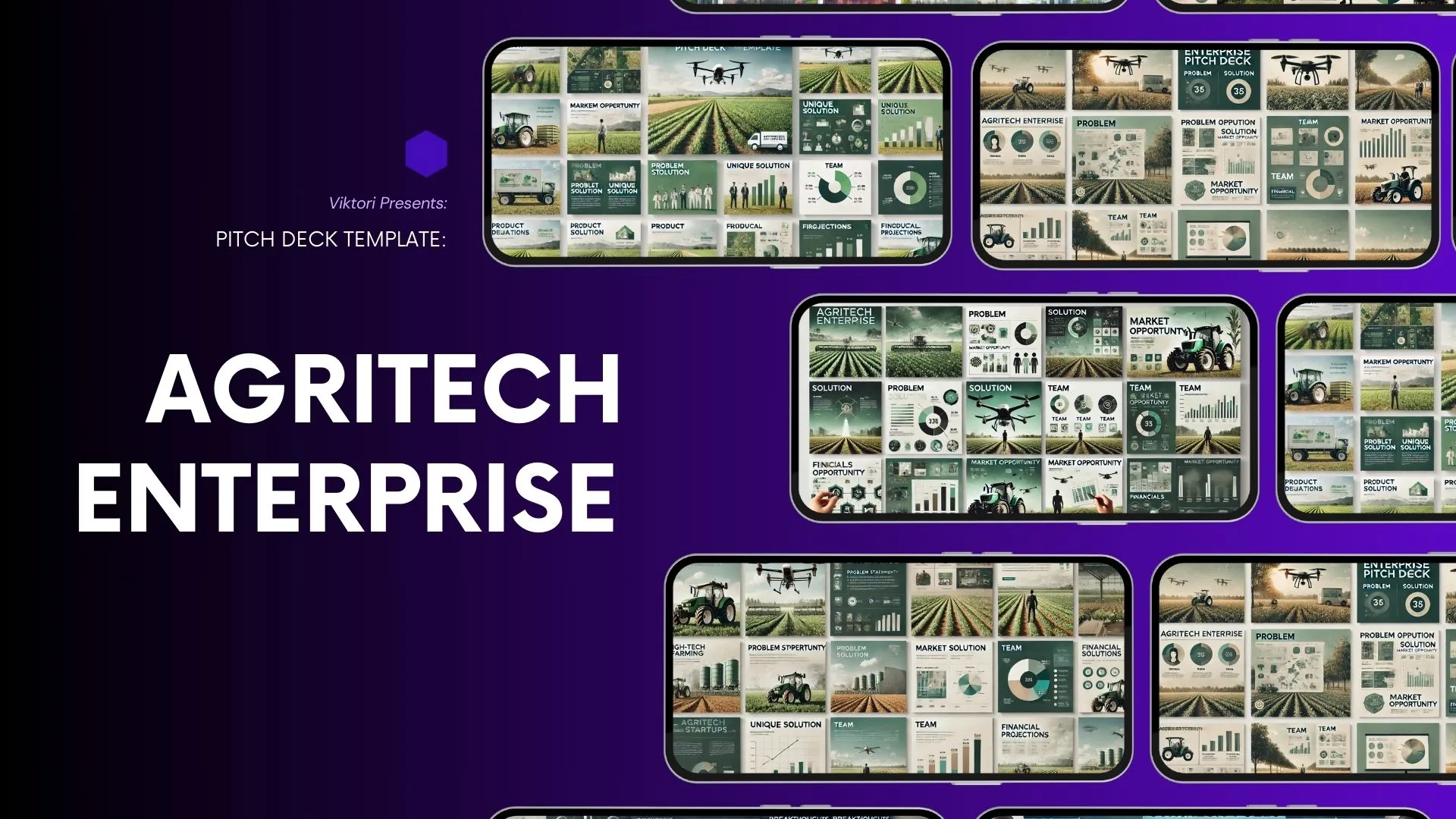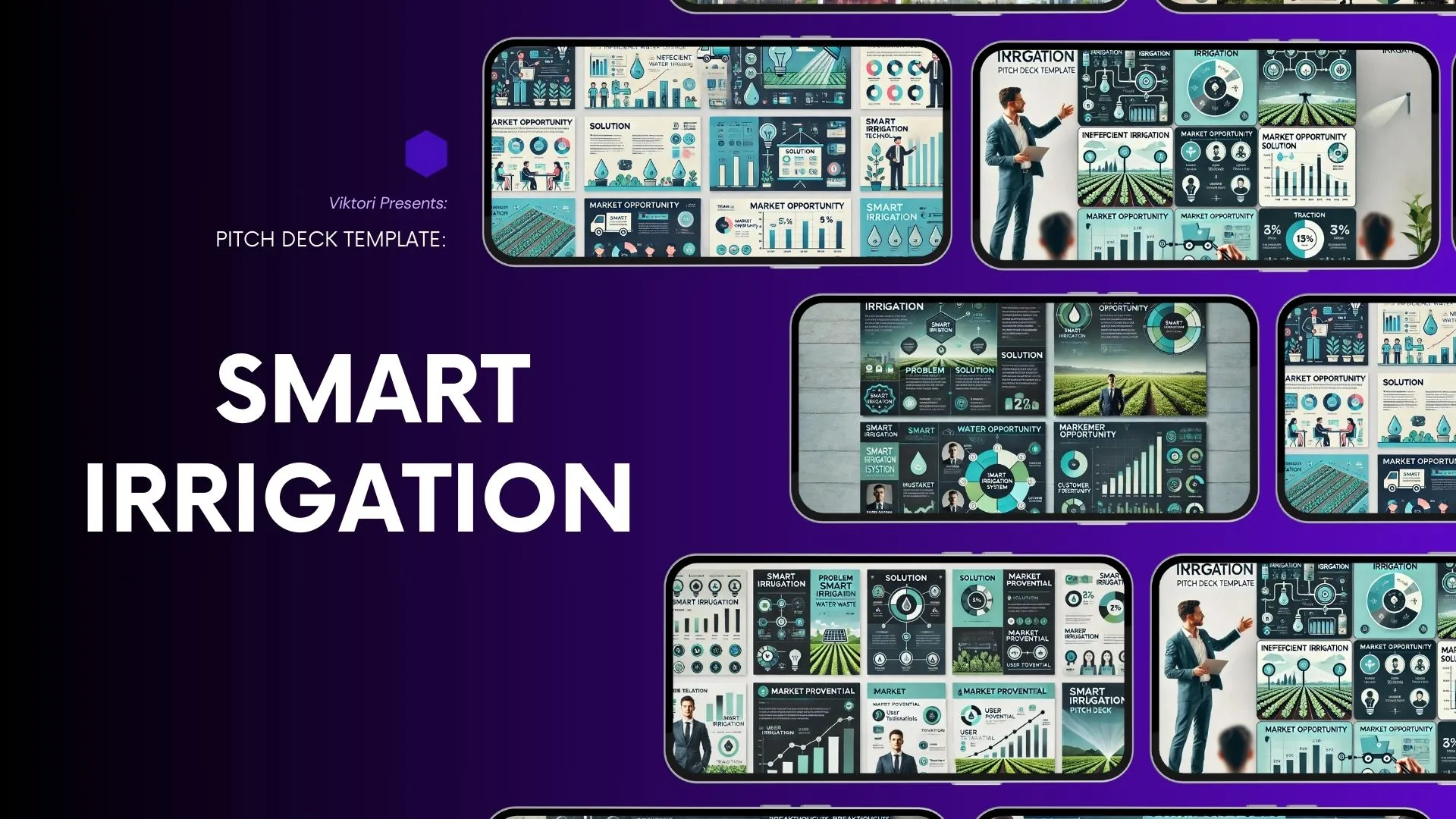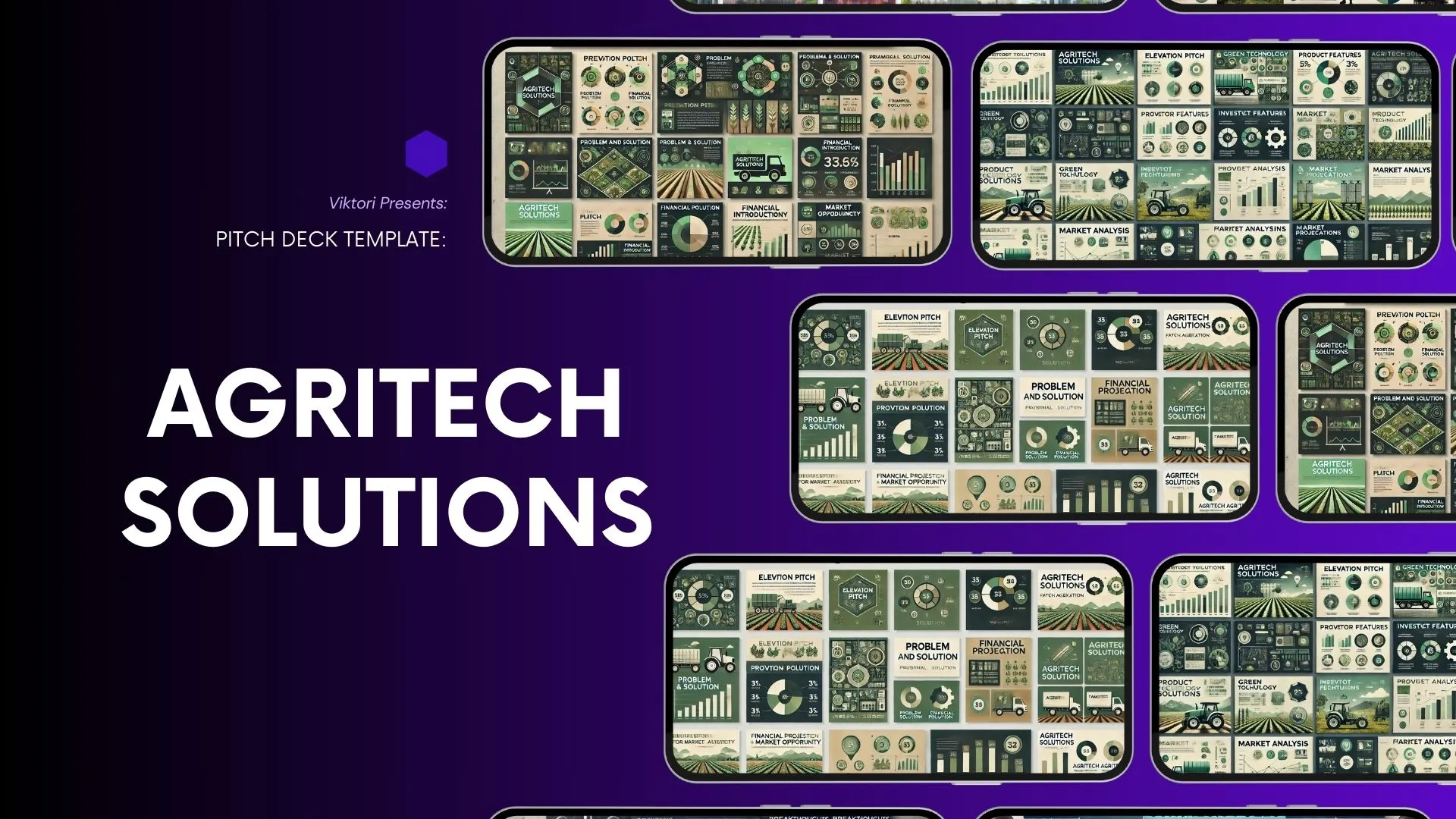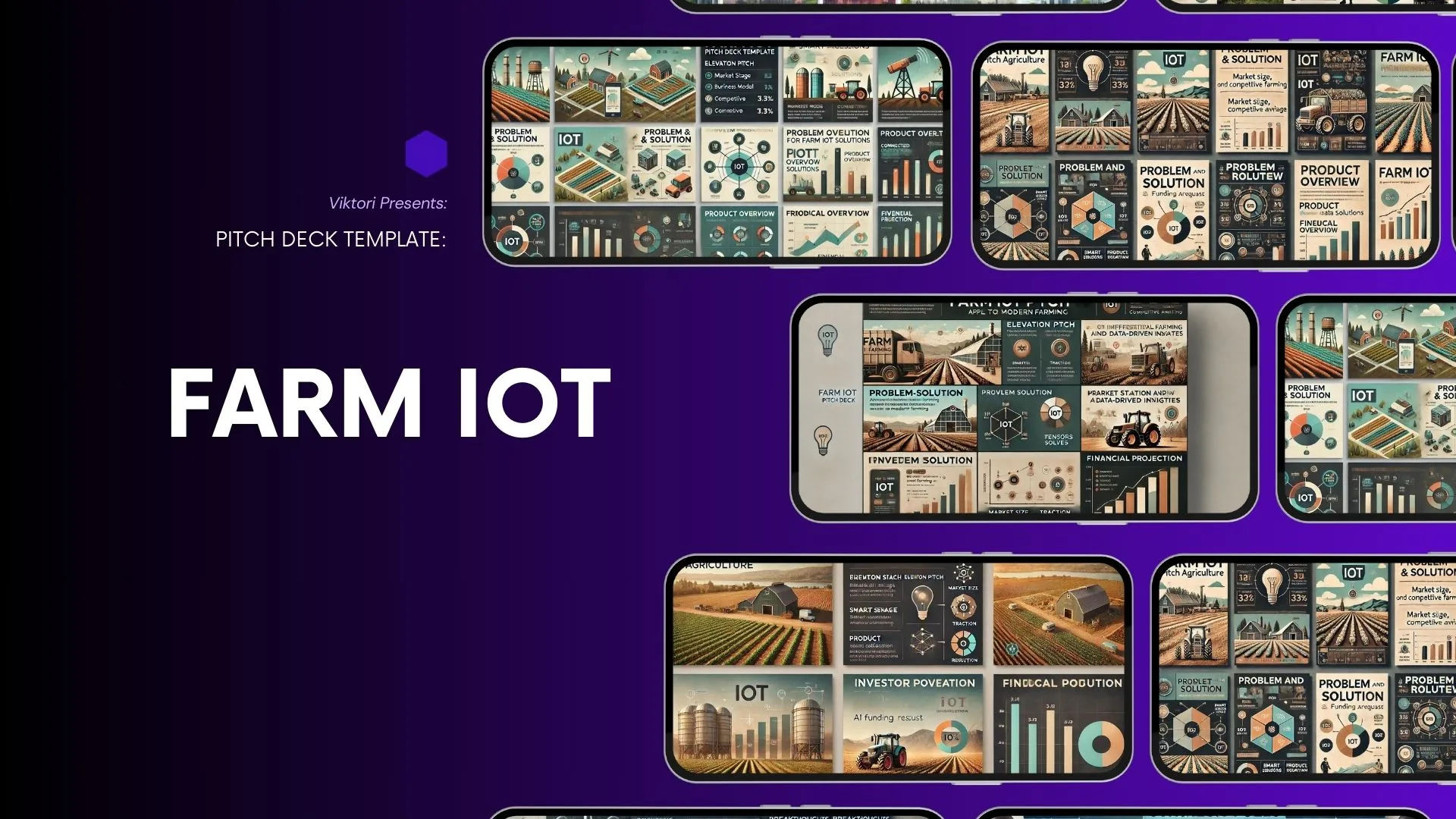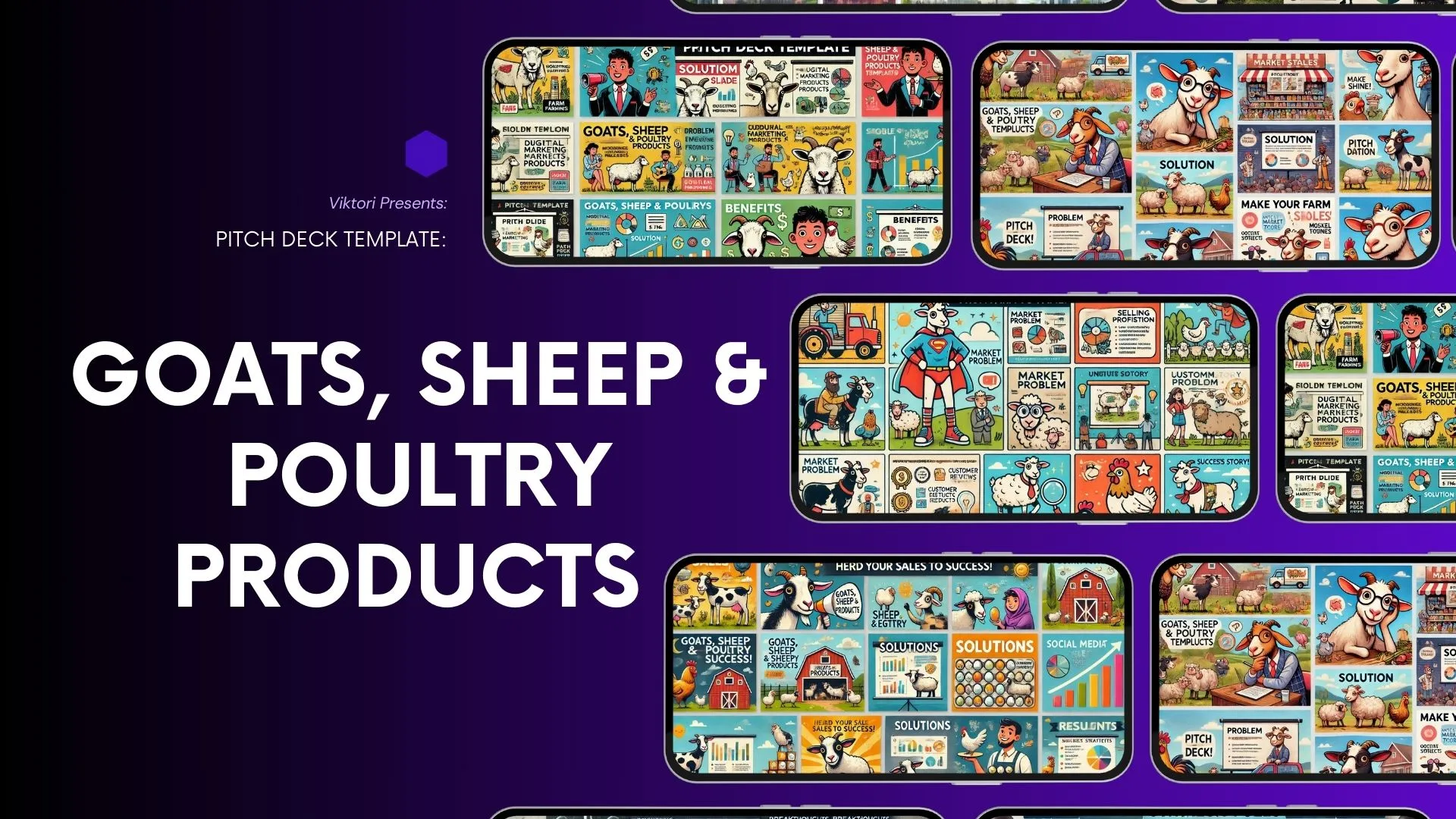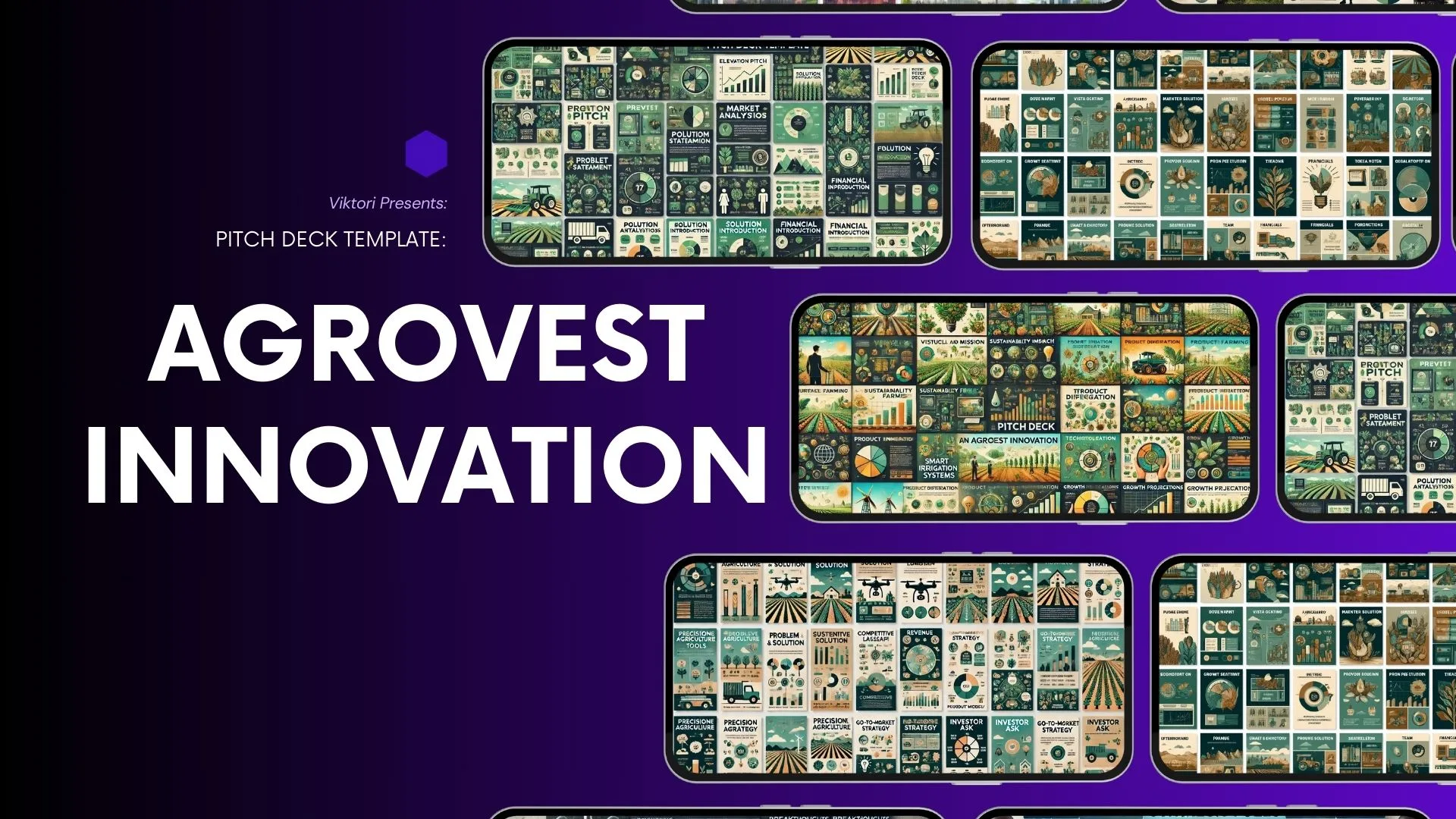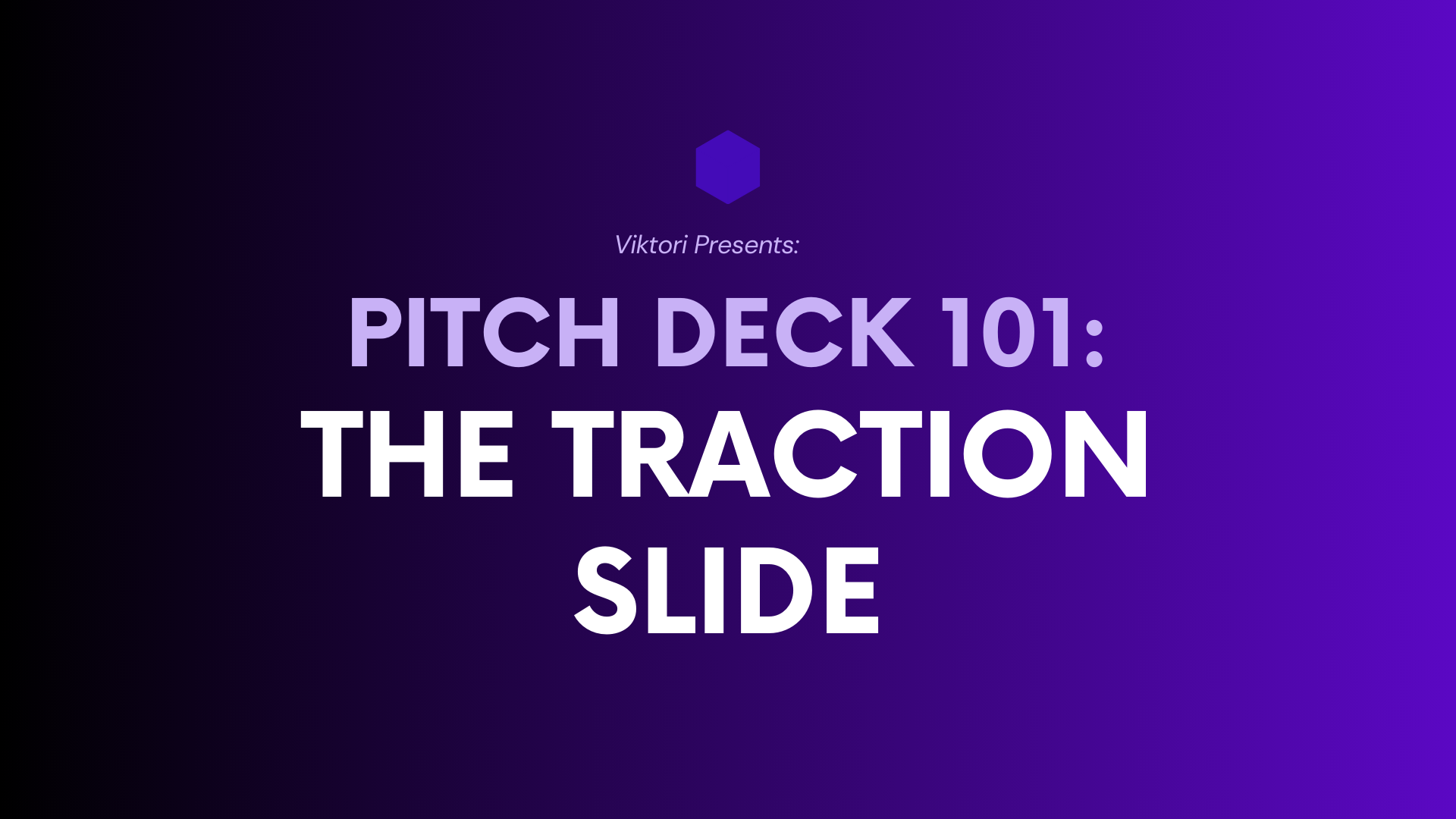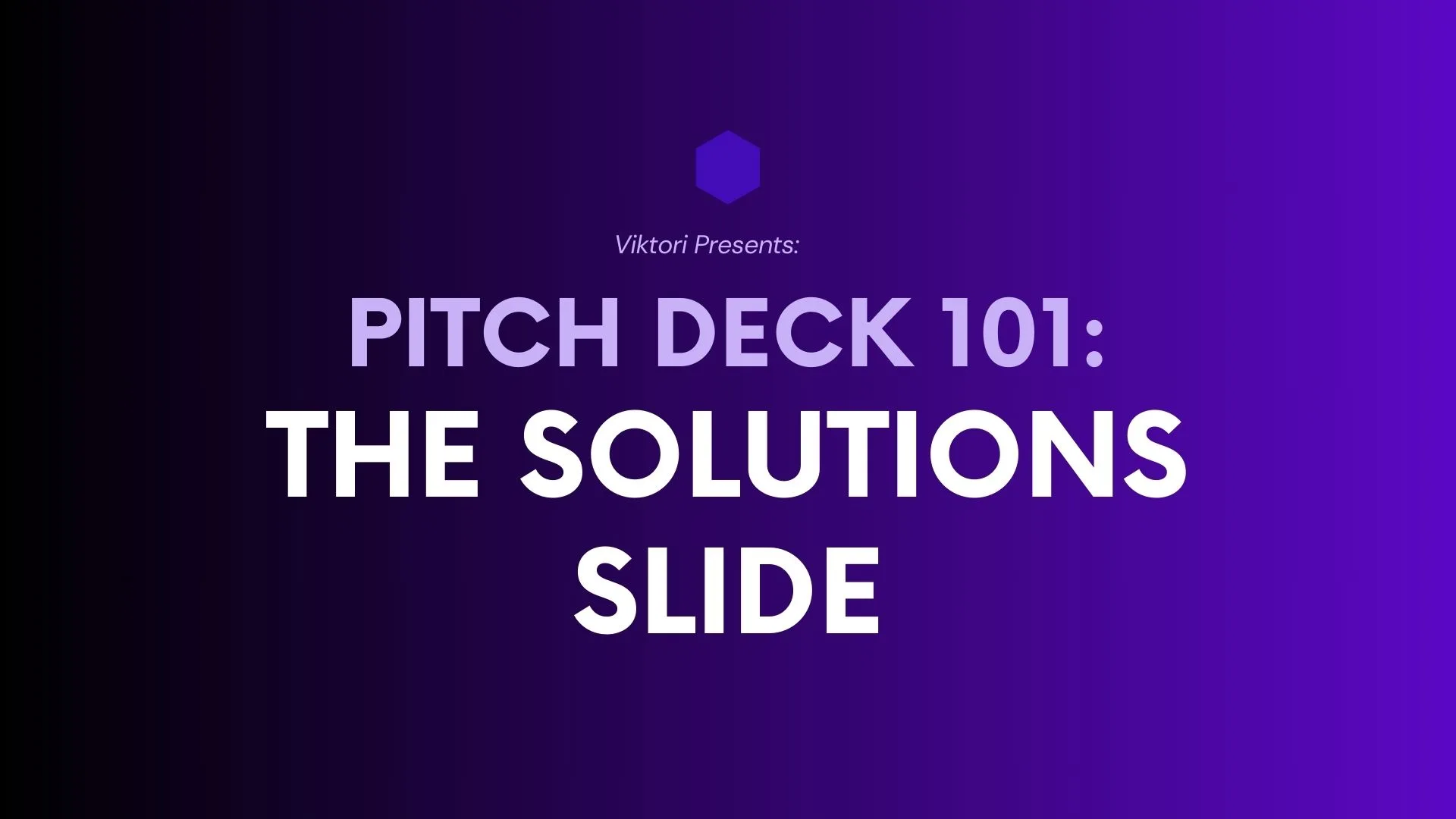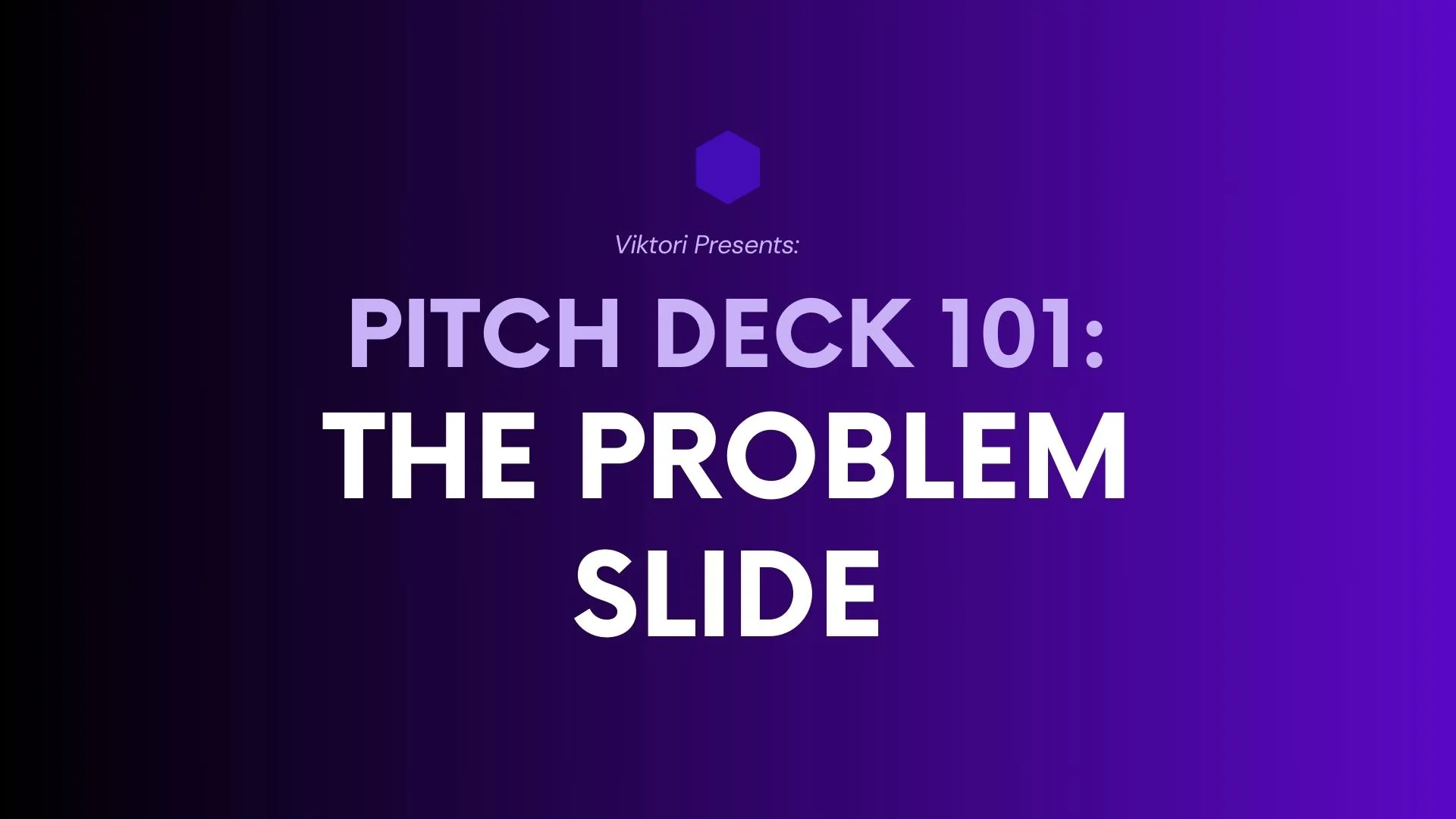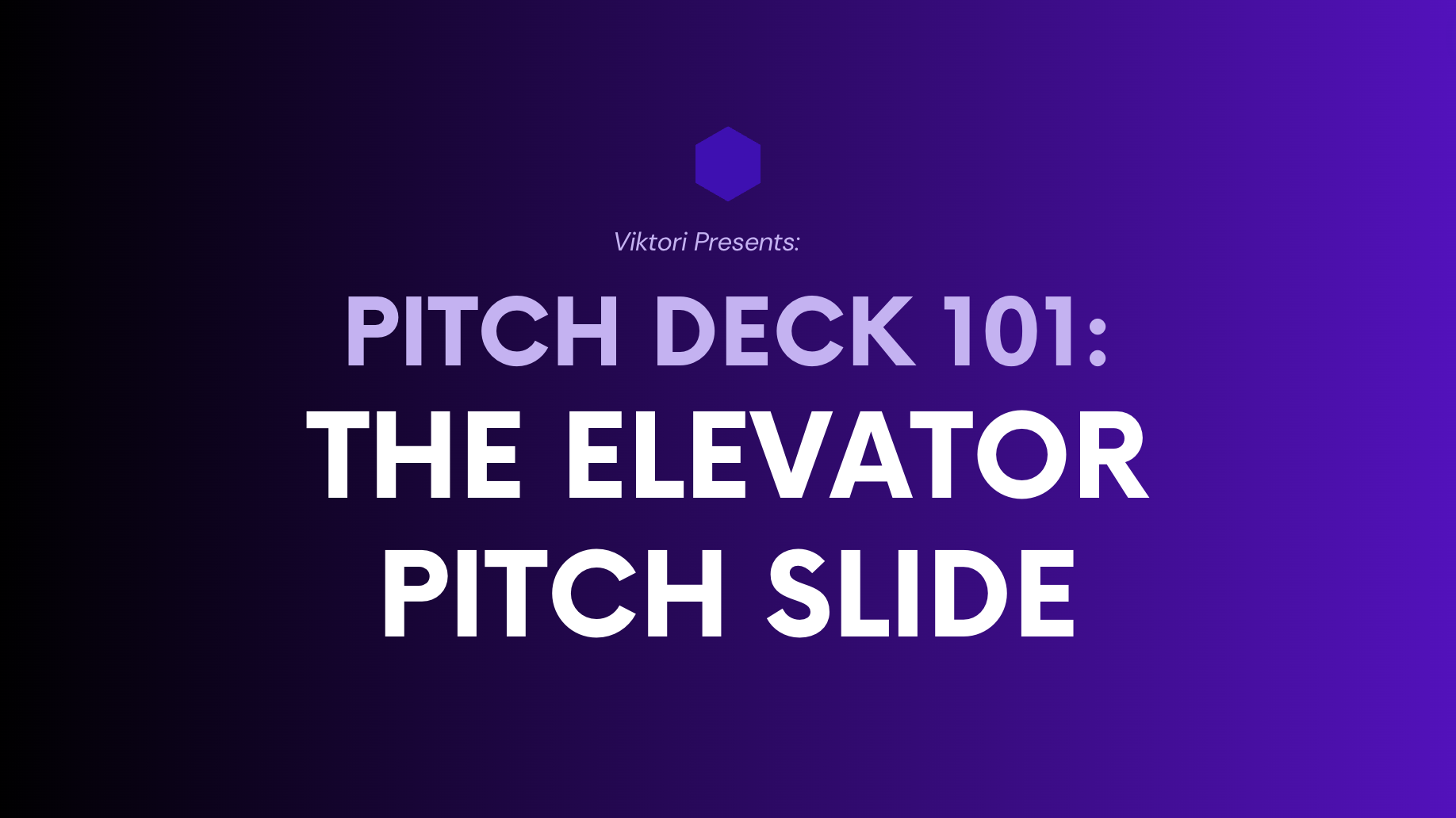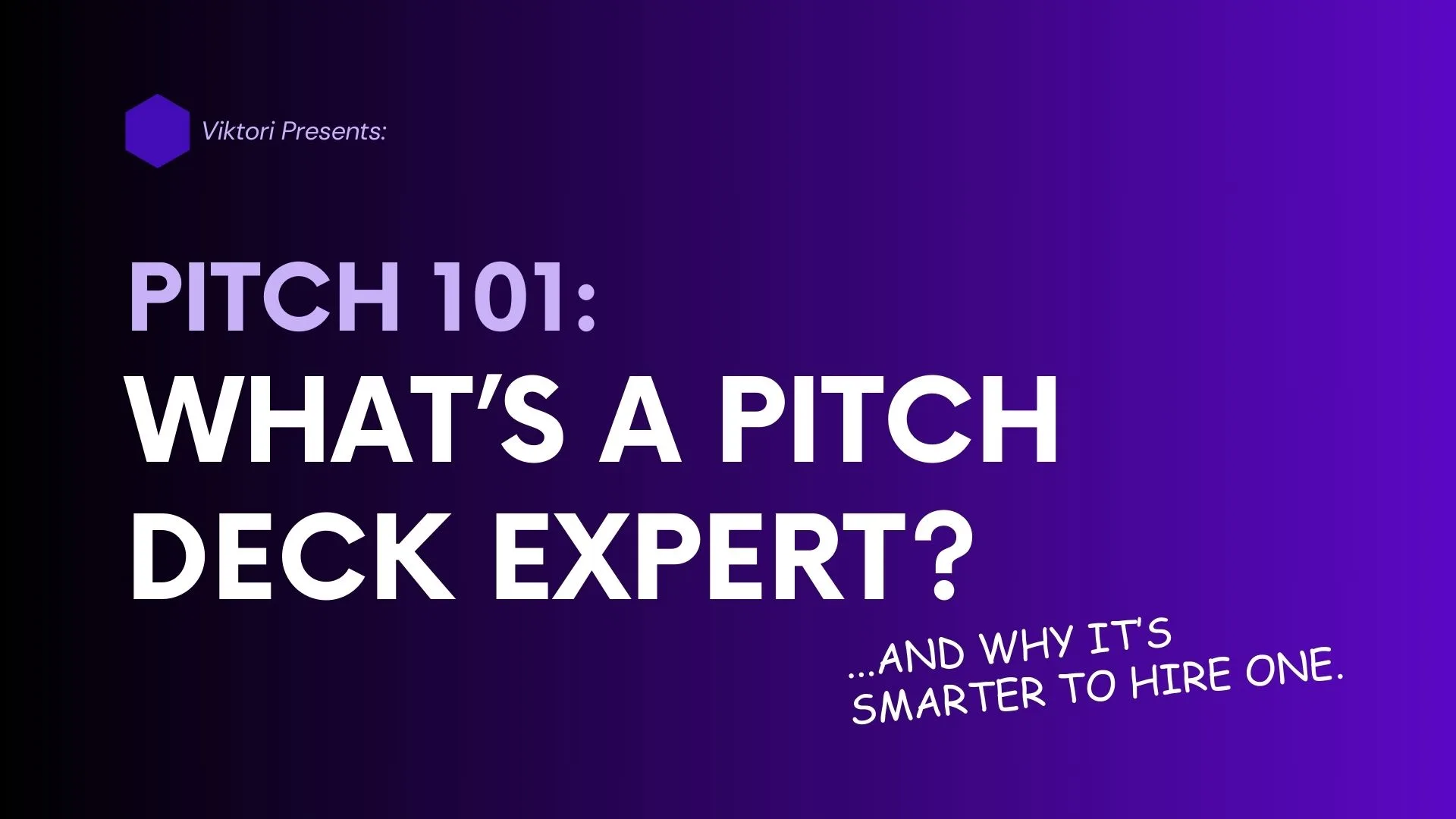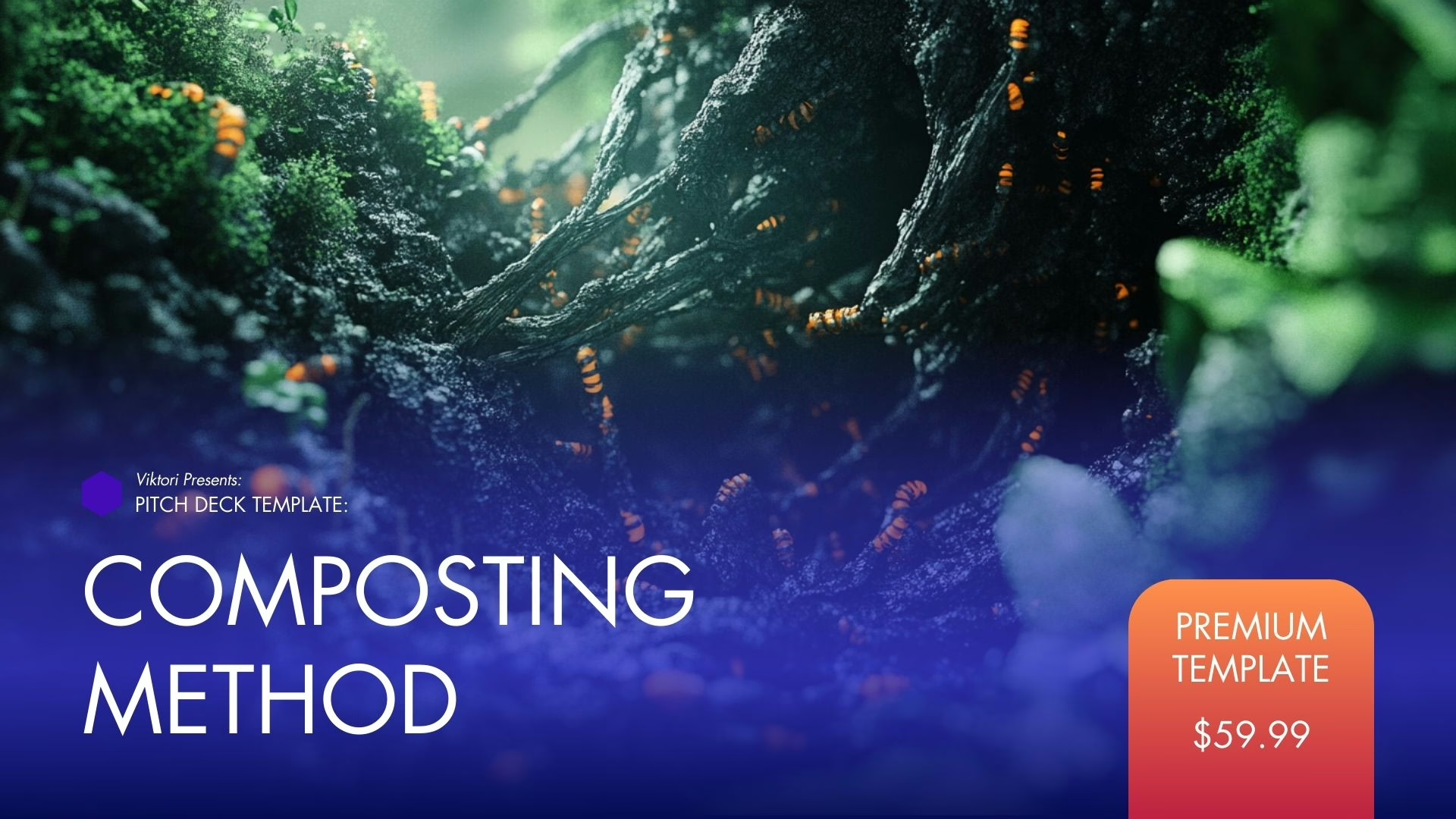

Author: Viktor
Pitch Deck Expert. Ex Advertising. Founder of Viktori. $500mill In Funding. Bald Since 2010.
The 12 Slide Vermicomposting Shop Pitch Deck Template
1. Elevator Pitch (Slide 1)
Headline: “Turning Waste into Wealth with Vermicomposting”
Content:
- Opening Statement: “We revolutionize the way the world handles organic waste.”
- Problem: “Globally, over 1.3 billion tons of food waste ends up in landfills every year, contributing to methane emissions and soil degradation.”
- Solution: “Our vermicomposting technology transforms organic waste into premium compost, reducing landfill contributions while enhancing soil health.”
- Closing Hook: “Join us in creating a sustainable future where waste becomes a resource.”
Visual Suggestions:
- Striking image of a worm farm or rich compost alongside food waste.
- Statistic overlaid on a landfill photo for impact.
2. Investor Highlights (Slide 2)
Headline: “The Opportunity to Invest in Sustainability and Profit”
Content:
- Market Size: “$XX billion global compost market, growing at XX% CAGR.”
- Traction: “Pilot program diverted XX tons of waste and produced XX tons of high-quality compost.”
- Revenue Model: “Recurring revenue streams from compost sales and waste management contracts.”
- Team Expertise: “Led by experts in sustainable agriculture, engineering, and circular economy strategies.”
- Environmental Impact: “Each ton of waste processed reduces XX kg of CO2 equivalent emissions.”
Visual Suggestions:
- Icons or infographics for quick data consumption.
- A pie chart showing revenue streams or market potential.
3. Problem Statement (Slide 3)
Headline: “The Waste Crisis is Growing”
Content:
- Statistics to Build Urgency:
- “Organic waste accounts for 50% of landfill content, emitting methane, a greenhouse gas 25x more potent than CO2.”
- “Soil degradation costs $XX billion annually, threatening food security.”
- Pain Points for Stakeholders:
- Cities: Expensive landfill space and waste management costs.
- Farmers: Declining soil fertility and high fertilizer costs.
- Corporations: Growing pressure to adopt sustainable practices.
- Callout: “Without action, the waste crisis will escalate, driving climate change and depleting natural resources.”
Visual Suggestions:
- Before-and-after photos of degraded vs. fertile land.
- Chart or graph showing waste growth trends.
4. Market Opportunity (Slide 4)
Headline: “A Multi-Billion Dollar Market Awaits”
Content:
- Total Addressable Market (TAM):
- “$XX billion compost market projected by 20XX.”
- Drivers of Growth:
- Increasing demand for sustainable agriculture.
- Government regulations on organic waste disposal.
- Rising consumer awareness of climate change.
- Target Segments:
- Municipal waste programs.
- Organic farmers.
- Urban gardening and landscaping businesses.
Visual Suggestions:
- Market segmentation map.
- Key drivers listed with icons for emphasis.
5. The Solution (Slide 5)
Headline: “Efficient, Scalable, and Eco-Friendly”
Content:
- The Process: “Transform organic waste into high-quality compost using efficient vermicomposting techniques.”
- Unique Selling Points:
- Fast decomposition compared to traditional composting.
- Rich nutrient output that improves crop yields by XX%.
- Cost-effective, modular systems adaptable for various scales.
- Environmental Benefits:
- “XX tons of CO2 equivalent saved per ton of waste.”
- “Enriches degraded soils and enhances carbon sequestration.”
Visual Suggestions:
- Step-by-step diagram of the vermicomposting process.
- Before-and-after comparison of waste and finished compost.
6. Business Model (Slide 6)
Headline: “Profitable and Sustainable Growth”
Content:
- Revenue Streams:
- Compost Sales: Premium organic fertilizer for agriculture, landscaping, and home gardening.
- Waste Management: Fee-based service for municipalities and businesses.
- Licensing: Technology and know-how for decentralized vermicomposting systems.
- Cost Structure:
- Low operational costs due to efficient worm-based systems.
- Scalable modular units minimize upfront investment.
- Growth Strategy:
- Start with high-demand urban areas and scale to rural agricultural hubs.
- Build partnerships with municipalities and large-scale food producers.
Visual Suggestions:
- Revenue model as a flowchart.
- Illustrative diagram showing partnerships and revenue loops.
7. Customer Benefits (Slide 7)
Headline: “A Win-Win Solution for Stakeholders”
Content:
- Municipalities: Reduce landfill costs, meet regulatory requirements, and promote sustainability initiatives.
- Farmers: Access high-quality, nutrient-rich compost that improves soil health and crop yields.
- Corporations: Demonstrate environmental responsibility and reduce waste disposal costs.
- Communities: Cleaner environments, less odor from waste, and support for urban gardening initiatives.
- Environmental Benefits: Significant reductions in methane emissions and improvement in soil carbon sequestration.
Visual Suggestions:
- Icons representing each stakeholder (e.g., a city skyline, a farm, a corporate building).
- Testimonials or a case study example.
8. How It Works (Slide 8)
Headline: “Transforming Waste into Value—Step by Step”
Content:
- Collection: Organic waste sourced from municipalities, businesses, or households.
- Processing: Waste fed into vermicomposting systems, where worms break it down into nutrient-rich compost.
- Output: High-quality compost bagged and sold to end-users.
- Distribution: Delivered to farmers, retailers, or landscaping companies.
- Impact: Reduction in landfill use, enhanced soil quality, and measurable carbon offset.
Visual Suggestions:
- A circular flow diagram or infographic illustrating the process.
- Photos of each step (e.g., waste collection bins, worms in action, compost bags).
9. Competitive Landscape (Slide 9)
Headline: “Leading the Way in Sustainable Waste Management”
Content:
- Direct Competitors:
- Comparison of pricing, efficiency, and impact metrics.
- Unique Differentiators:
- Faster processing time.
- Lower operating costs due to worm-based systems.
- Modular scalability for various customer sizes.
- Barriers to Entry:
- Proprietary technology, established partnerships, and operational expertise.
Visual Suggestions:
- Competitive matrix highlighting strengths (e.g., cost, scalability, efficiency).
- Callout quote or testimonial reinforcing your competitive edge.
10. Financial Projections (Slide 10)
Headline: “Sustainable Growth with High Returns”
Content:
- Revenue Streams Breakdown:
- Compost sales: XX% of revenue.
- Waste management fees: XX%.
- Licensing: XX%.
- Projections:
- Year 1: $XXX revenue, XX% profit margin.
- Year 3: $XXX revenue, XX% profit margin.
- Year 5: $XXX revenue, XX% profit margin.
- Key Assumptions:
- Adoption rates, waste processing capacity, and market growth trends.
Visual Suggestions:
- Line graph showing revenue and profit growth over five years.
- Pie chart illustrating revenue streams.
11. Timeline & Roadmap (Slide 11)
Headline: “Scaling for Impact and Profitability”
Content:
- Short-Term Goals (0-12 Months):
- Finalize pilot programs.
- Secure key partnerships with municipalities and agricultural cooperatives.
- Launch first commercial processing site.
- Mid-Term Goals (1-3 Years):
- Expand to additional cities.
- Develop new revenue streams (e.g., licensing and franchising).
- Refine technology for increased efficiency.
- Long-Term Goals (3-5 Years):
- Achieve XX% market share in target regions.
- Scale operations nationally or internationally.
- Establish a recognized brand in sustainable waste management.
Visual Suggestions:
- Timeline graphic with milestones and icons.
- Callout for major achievements or expansions.
12. Call to Action & Contact (Slide 12)
Headline: “Join the Vermicomposting Revolution”
Content:
- Specific Ask:
- Seeking $XXX funding for expansion and scaling.
- Opportunities for partnerships with municipalities, farms, and corporations.
- Impact Statement:
- “Every dollar invested contributes to measurable environmental and economic benefits.”
- Contact Information:
- Email, phone, and website.
- LinkedIn or social media handles.
Visual Suggestions:
- Inspiring team photo or an image of lush, compost-enriched farmland.
- QR code for easy access to contact or website.
Need a customized pitch deck template?
1000s of individuals like you asked for a tailored version of this template to help them craft a better pitch deck. Get yours for just $44. As soon as I get your request, I’ll follow up with one question to confirm what exactly is that are you pitching. This will help me nail the content for you.
What you’ll get is a 3+ page editable word document that contains a fully fleshed out slide by slide deck content for your pitch.
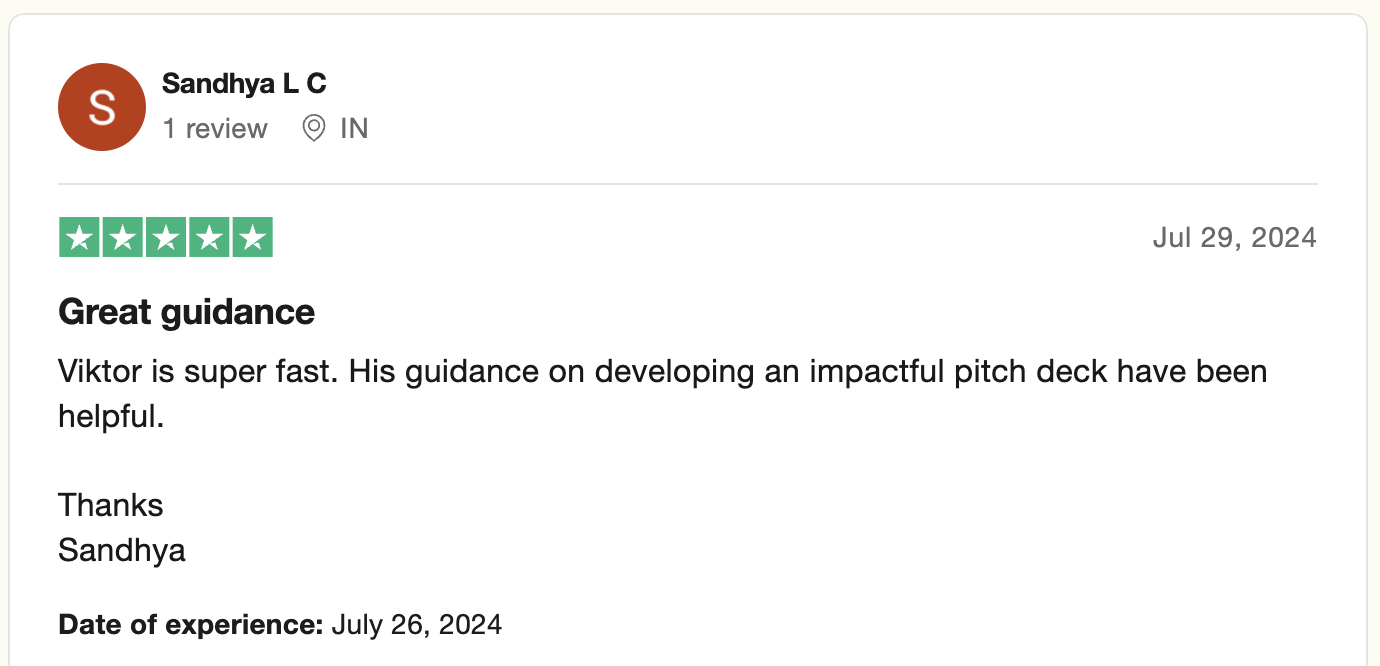
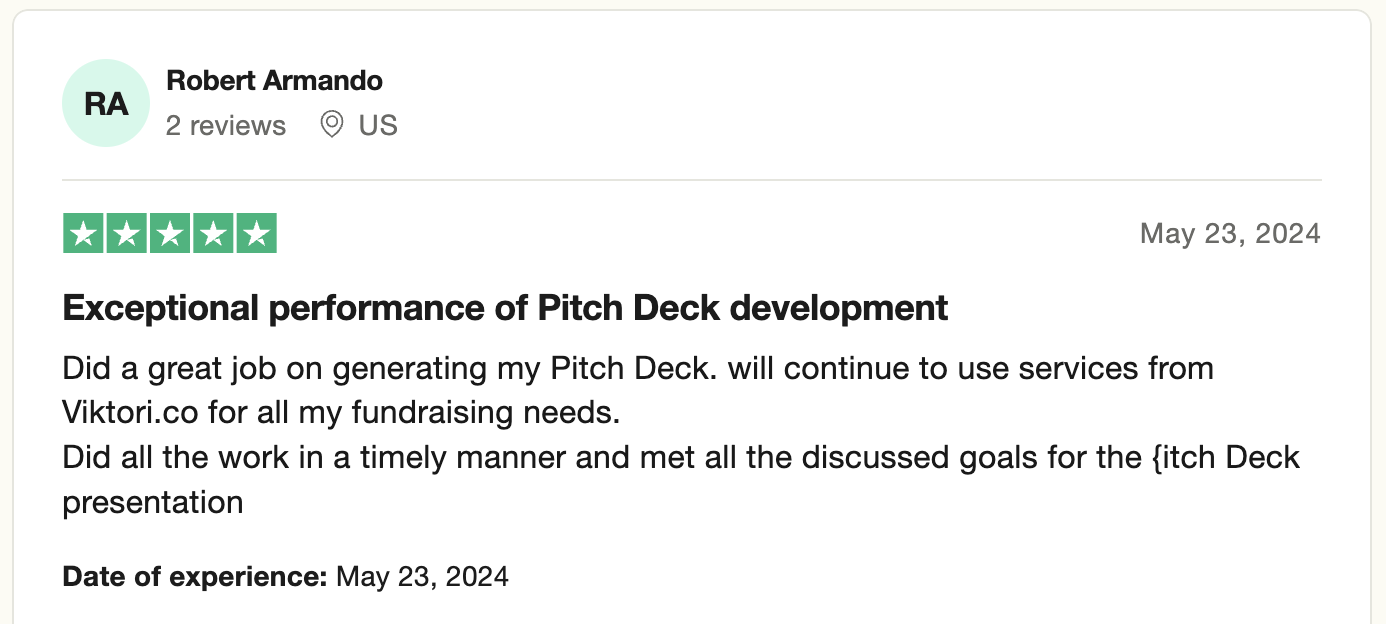
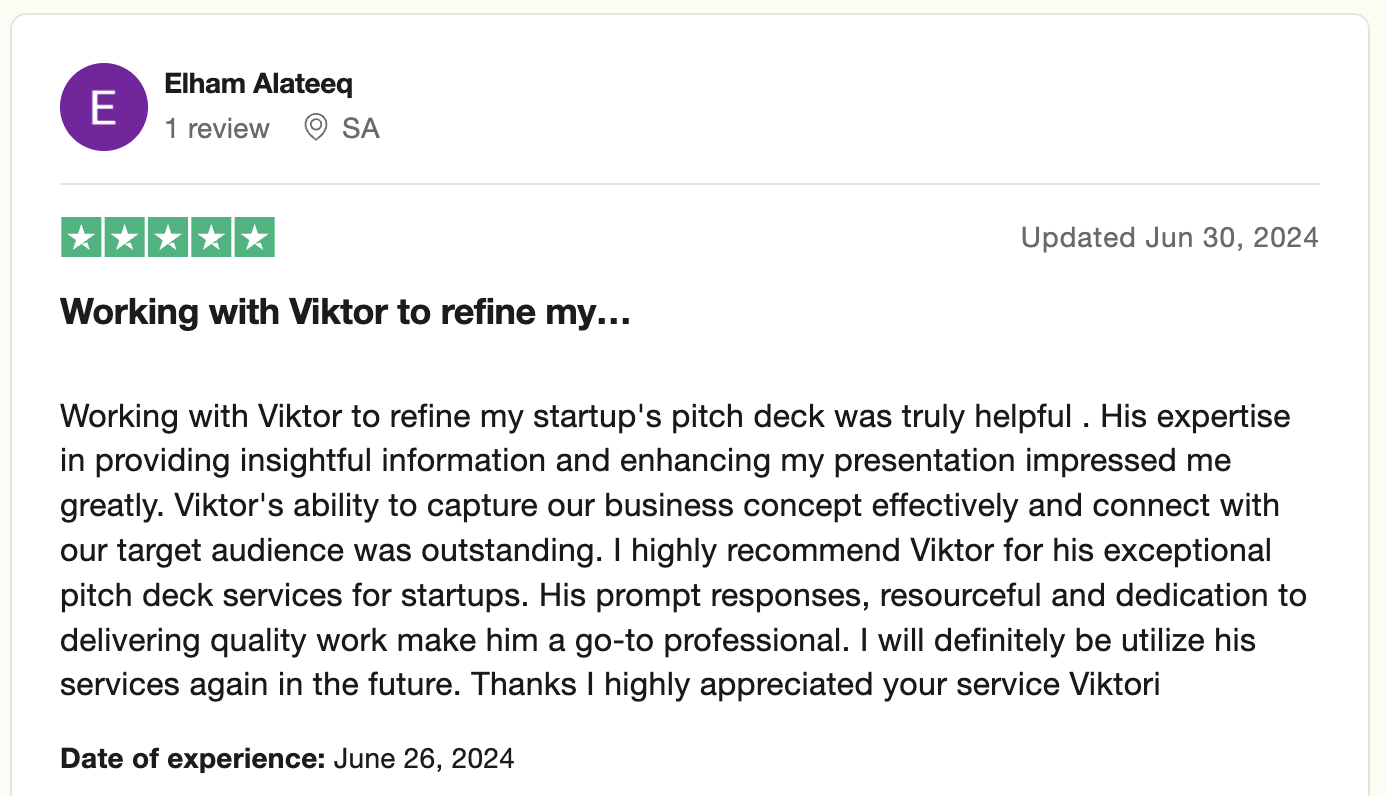
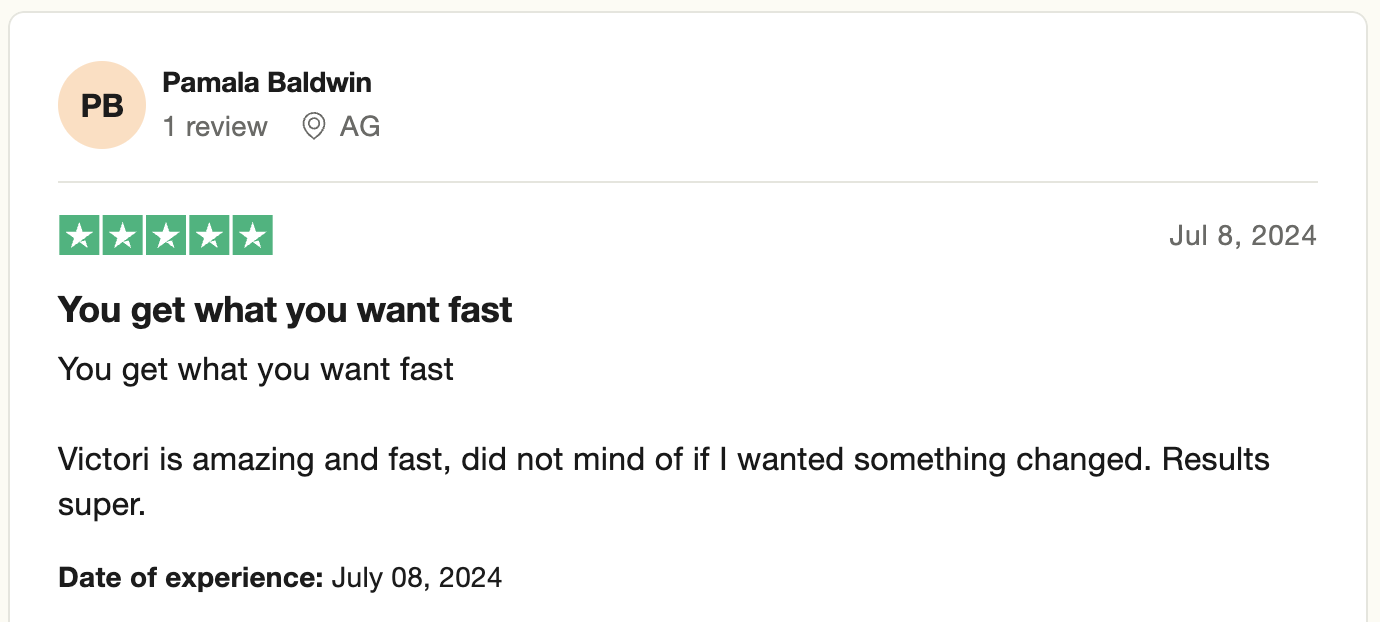
Alternatively, book a call and you’ll brief me on the specifics of your pitch.
Book The Free 30 Min Call
5/5 Upwork Rating | 100% TrustPilot

Plan on building the pitch deck yourself?
Option 1: Build with Gamma
Gamma is the prefered Ai presentation maker and if you’re strapped for resources, this tool will help you flesh out an ok pitch deck presentation. Here’s how it looks:
Option 2: Do It Yourself
If you’ve done a few presentation in the past, then this is the option you should take. Follow these simple steps:
- Pick one of the premium Envato templates by clicking on the image below,
- Answer the slide by slide questions I listed in the section below the image
- Follow the pitch deck guide I linked out to, next to the questions,
And build your own deck. It’s as easy as that.
Key Questions to Answer to Write The Automotive Pitch Deck
1. Elevator Pitch (Slide 1)
- What is the single biggest problem your solution addresses?
- How does your solution stand out or innovate compared to existing methods?
- Who is your target audience or primary market?
- What is the primary benefit or transformation your solution provides?
- Is there a compelling statistic or fact that illustrates the urgency of the problem?
2. Investor Highlights (Slide 2)
- What is the size of the market opportunity?
- What traction or milestones has the business achieved to date (e.g., pilot programs, partnerships)?
- What is the primary revenue model, and how scalable is it?
- What competitive advantages make this an attractive investment?
- How does your team’s expertise align with the venture’s goals?
3. Problem Statement (Slide 3)
- What is the key problem or pain point your target audience faces?
- How large is the impact of this problem (economic, environmental, societal)?
- What are the consequences of not addressing this issue?
- Are there relevant statistics or trends to validate the problem’s urgency?
- Who are the stakeholders most affected by the problem?
4. Market Opportunity (Slide 4)
- What is the Total Addressable Market (TAM) for your solution?
- What are the key drivers of growth in this industry or market?
- Which specific market segments will you focus on initially?
- Are there trends (e.g., regulations, consumer behavior) that support market growth?
- What does your competition look like in this space, and where are the gaps?
5. The Solution (Slide 5)
- What is your solution, and how does it work?
- What is unique about your solution compared to competitors?
- How does it address the problem effectively and efficiently?
- Are there before-and-after scenarios or customer outcomes you can showcase?
- What is the environmental, economic, or operational impact of your solution?
6. Business Model (Slide 6)
- What are your primary revenue streams (e.g., product sales, services, licensing)?
- What is the pricing model for your offerings?
- What are the key cost components in your operations?
- How scalable is your model, and what are the limits to growth?
- Have you identified any recurring revenue opportunities?
7. Customer Benefits (Slide 7)
- Who are your primary customers or stakeholders (e.g., municipalities, farmers)?
- What are the specific benefits your solution offers to each stakeholder group?
- Can you quantify the cost savings, efficiency gains, or environmental impact?
- Are there testimonials or case studies that demonstrate these benefits?
- What makes your solution a compelling choice over alternatives?
8. How It Works (Slide 8)
- What are the core steps in your solution’s process?
- How do you collect inputs (e.g., waste) and deliver outputs (e.g., compost)?
- Are there technical or operational efficiencies that differentiate your process?
- Can your process be visualized as a flowchart or diagram?
- How does your solution integrate with existing systems or infrastructure?
9. Competitive Landscape (Slide 9)
- Who are your primary competitors, and what are their strengths/weaknesses?
- What are the key differentiators that make your solution superior?
- Are there barriers to entry that protect your position in the market?
- How does your pricing compare to competitors?
- What feedback from customers or partners highlights your competitive advantage?
10. Financial Projections (Slide 10)
- What are your expected revenue streams and growth rates over the next 3-5 years?
- What assumptions are driving your financial projections?
- What are your expected profit margins at various stages of growth?
- What are your key costs and how will they scale with growth?
- Are there any benchmarks or industry averages to validate your projections?
11. Timeline & Roadmap (Slide 11)
- What milestones have you achieved so far?
- What are the key short-term (0-12 months) objectives?
- What medium-term (1-3 years) goals will drive growth?
- What is your long-term vision for the venture?
- Are there any partnerships, technologies, or market expansions planned?
12. Call to Action & Contact (Slide 12)
- What specific support or investment are you seeking from the audience?
- How will the investment be used (e.g., scaling, R&D, marketing)?
- What is the potential ROI or impact for investors or partners?
- What are the best ways to get in touch with your team?
- Is there a memorable closing statement or image to inspire action?
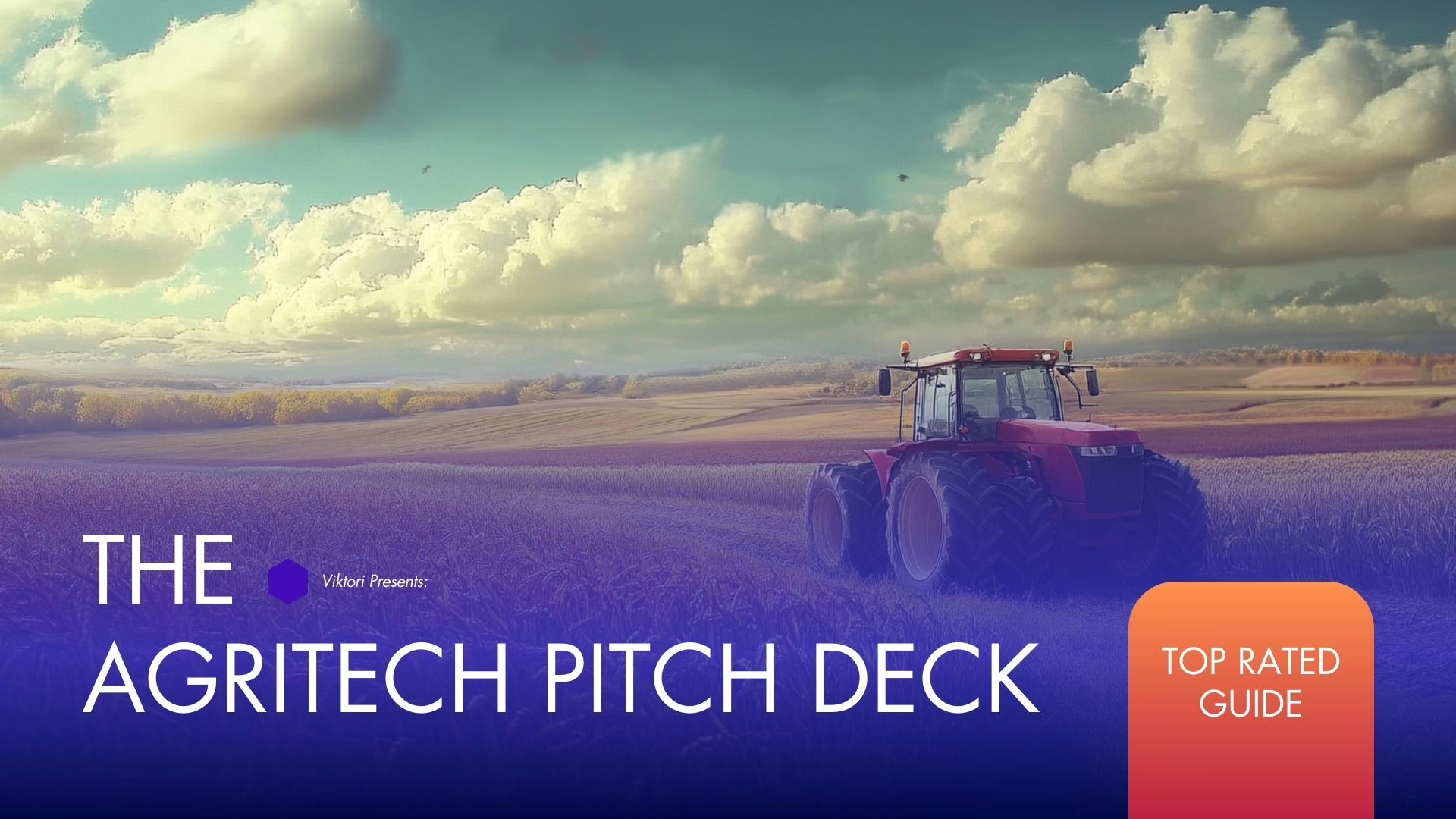
Follow My Agritech Pitch Deck Guide
A detailed guide with the steps outlined to get to a investor ready deck.
Alternatively, book a call and get the full pitch deck done. Hands-off.
Related Agritech Pitch Deck Templates
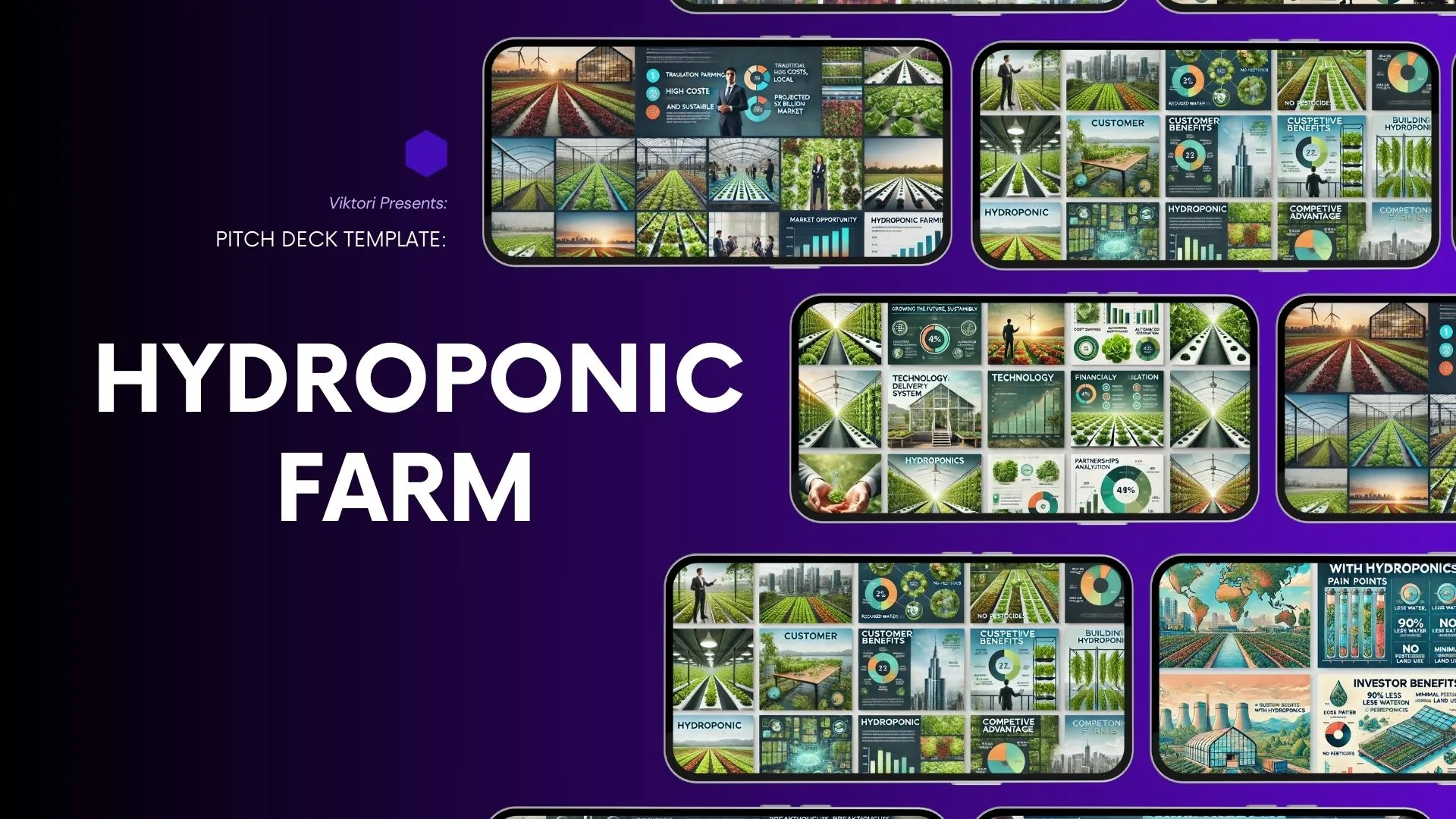
10 Slide Hydroponic Farm Pitch Deck Template: For When You Want to Grow Lettuce, Not Boring Investors
Read More »Slide by Slide Guides


